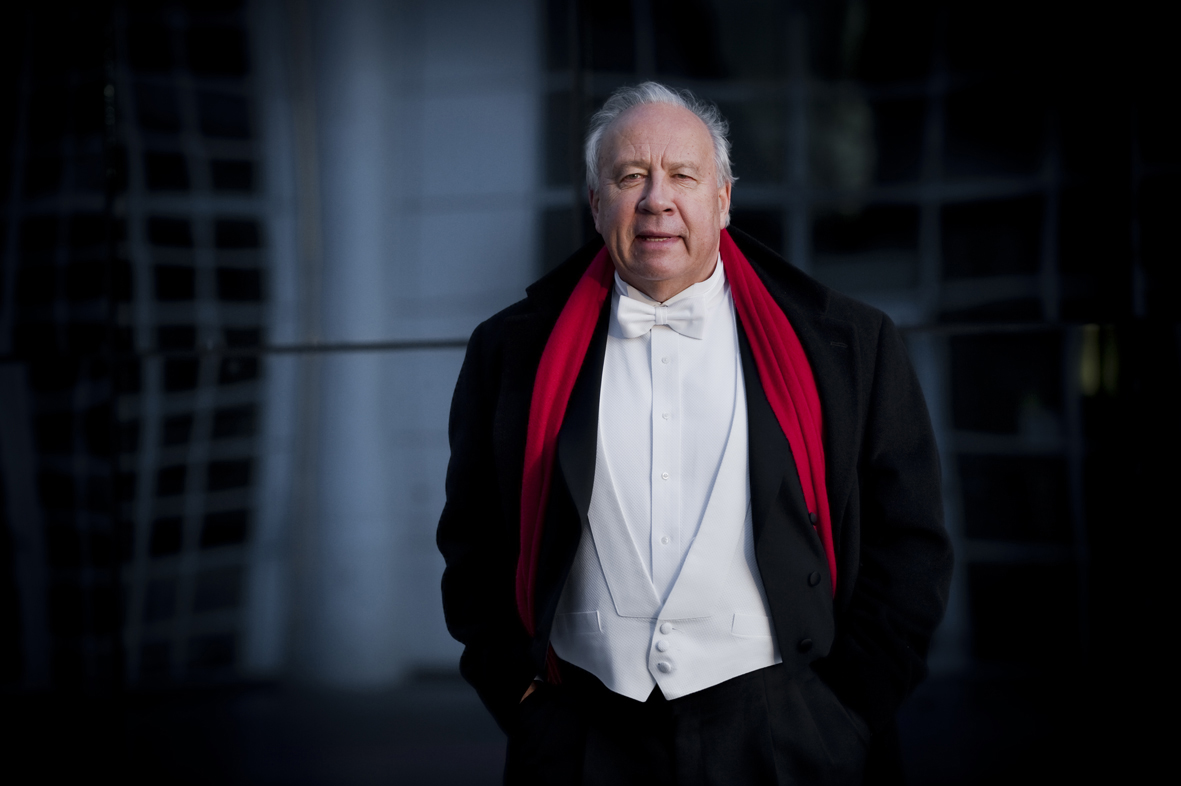14., 15. ja 16. jaanuaril juhatas Neeme Järvi USA rahvuslikku sümfooniaorkestrit. Loe ajalehe The Washington Post artiklit

Neeme Järvi, the 78-year-old Estonian conductor, is a master of economy on the podium. Jarvi is one of the leading conductors in the world today. He has a huge repertory and a huge discography; he’s the patriarch of a conducting family (his sons Paavo and Kristjan are both successful conductors); and he has very little left to prove. He has reached an age and a professional level that allow him to approach his job with a healthy measure of insouciance and still get results.
On Thursday night, he stood on the podium of the Kennedy Center Concert Hall before the National Symphony Orchestra — which he conducts every couple of seasons — and moved his arms sometimes little, and sometimes not at all, and sometimes magisterially. It was perfectly sufficient for the orchestra: the performance was just fine, if a little ponderous.
It’s something of an orchestral tradition for visiting conductors to lead with a piece that reflects something about them and/or their country of origin. Järvi complied with “5 pieces for string orchestra” by Heino Eller, whose main claim to fame outside the borders of Estonia is that he taught Estonia’s leading composer, Arvo Pärt. Pärt, not unusually, went in a very different direction from his professor’s melodious, languid, full-bodied exegesis on folk-music tunes and ideas, with lapidary but accurate titles such as “Dance” and “Lullaby”: competent and appealing music that has a future with orchestral audiences wanting the frisson of the new couched in a language it can embrace.
Jarvi has brought Prokofiev to the NSO on his past three visits: On Thursday, it was the Violin Concerto No. 1, with the Latvian violinist Baiba Skride making her NSO debut. (She played with the Baltimore Symphony Orchestra at Strathmore in 2011.) Skride is a tight, clean player who responded almost too well to Järvi’s phlegmatism. Prokofiev’s first concerto is filled with singing lines and crystalline passages in which the violin is held aloft on tremolos from the other strings; Skride was so clear and limpid that the effect was sometimes muted.
The second movement Scherzo found some of the composer’s signature bite, and the close of the final movement was purely, quietly radiant, like starlight. Still, the audience took a while to rouse itself to respond. Jarvi, indeed, had to signal to them with hands cupped around his ears to encourage enough applause to prompt an encore, Imitazione della campane by the German Baroque composer Johann Paul von Westhoff, which Skride again made sound almost facile, belying the challenges of the double-stops as her bow rocked gently back and forth.
After intermission, orchestra and conductor returned as if awakened for a big, alert, meaty reading of the Sibelius Second Symphony. Limbering up for its European tour in February, with the excitement of the announcement of its next music director just behind it, the NSO sounded in energetic fettle, and Jarvi gave the players their heads in a powerful reading of a work he clearly had internalized so deeply it took relatively little effort to unleash.
Loe artiklit ajalehe The Washington Post kodulehel.
